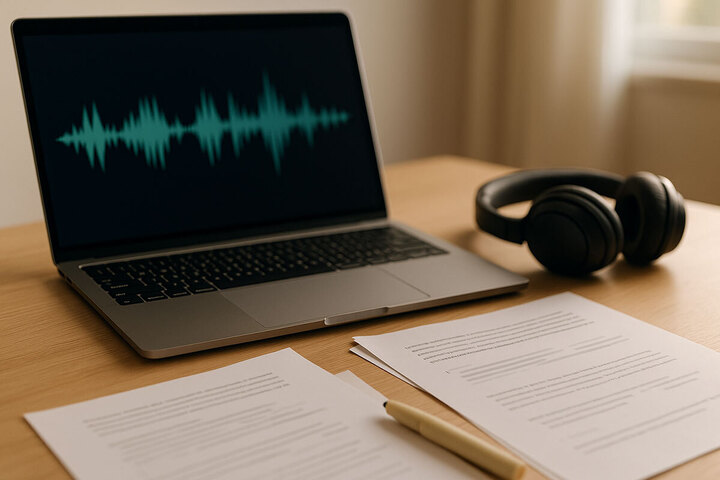Regardless of how good a writer you are, proofreading is usually the most painful and difficult aspect of writing. Our minds and eyes tend to gloss over errors, particularly after hours of gazing at the same words.
Fortunately, there is a powerful but affordable technological solution available that changes the way we find mistakes. By simply converting your written words to hear audio, you are able to activate another area of your brain, allowing error detection to be significantly simpler and more efficient. This change from reading to listening is the secret to refining your work with ease.
What are the Inherent Weaknesses of Conventional Proofreading?
Silent reading has been the default way to correct a document for hundreds of years. Authors print out their drafts, study the digital file close up, or try tactics such as reading the text backward in an effort to fool their brain into perceiving the words as new. The necessity of these techniques arises from an inherent cognitive flaw called ‘pattern recognition.’
When you write, your brain concentrates on meaning and structure, and when you proofread, your brain already understands what it means to write and fills in gaps or corrects small mistakes subconsciously. Your brain prioritizes understanding over careful scrutiny and that’s why you tend to easily overlook small but essential errors, such as the omission of an “of” or a duplicate word, such as “the the.”
In addition, screen reading causes eye strain that lessens accuracy and concentration. The wearier you become, the more likely you are to skim, and skimming is the bane of a clean final draft. It’s a coping mechanism for your brain when confronted with a familiar chunk of text. Because your brain has already done the work of reading the content during the writing process, it resists slowing down and re-reading it again for mistakes, particularly when you are merely glancing over the same words on a page. The second you add an outside, auditory component, however, this dynamic shifts entirely. When a program translates written words into verbal ones, it compels the author to read the text at a specified rate, involving the auditory cortex rather than exclusive visual processing.
This method, in which a computer program artificially recreates a human voice from text, is also known as text to speech (TTS). Using this mechanism, you establish a necessary distance between you and your writing so you can listen to the text precisely as a new pair of ears would, thereby avoiding the mental auto-correct mechanism that so frequently causes errors to be overlooked.
How Listening Uncovers the Unseen
The act of listening forces a different kind of attention, one that is highly sensitive to breaks in rhythm and logic. When a computer voice reads your document aloud, it highlights several types of common writing mistakes that are notoriously difficult to spot visually:
- Grammatical Gaps and Omitted Words: The most frequent mistakes are usually minor, such as linking words. Such a sentence as, “The book on the table is great,” may appear perfect in a rapid read, but spoken aloud, the omission of “is” or “was” is instantly jarring and conspicuous.
- Double Words: Your mind is conditioned to gloss over double words such as “the the” or “and and” since the word itself is acceptable and usual. A computer voice, however, pronounces each and every word, so the repetition is clumsy and cannot be ignored.
- Homophone and Spelling Mistakes: English has plenty of homophones (words with the same sound but different meanings and spellings), like their/there/they’re or to/too/two. In terms of sight, it is simple to look at the proper spelling of “their” and fail to notice that the situation called for “there.” Listening to proofreading makes you link the sound of the word to the meaning of the sentence, immediately alerting you to the confusion.
- Awkward Tone and Phrasing: Written words often sound fabulous in the writer’s head, but are confusing when said out loud. Listen to your work, and you can judge the rhythm and flow. You’ll pick up on long, run-on sentences, awkward transitions, and places where the tone doesn’t align with the intent. If the AI voice sounds like it’s gasping for breath or stopping at odd places, you know you need to reword the sentence for clarity.
Conclusion
Using technology to have your writing read back to you is no longer a luxury but an essential tool for anyone committed to creating quality content. By reversing your process from silent reading to careful listening, you avoid the cognitive blind spots that are characteristic of classical proofreading. Such a straightforward, simple-to-apply listening process greatly increases accuracy, enhances flow, and ensures a level of polish that few visual inspections can match. It really is the easiest method to guarantee your last draft will be both error-free and maximally effective.

